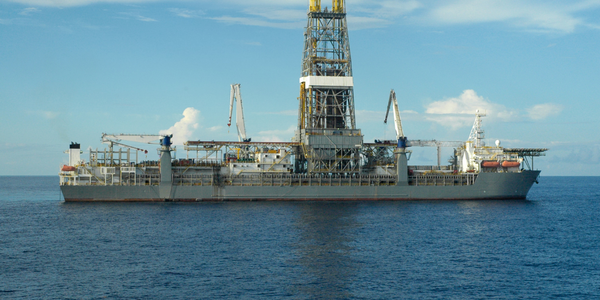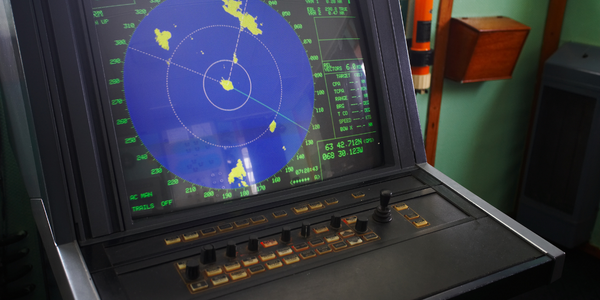Download PDF
3Discovered Leverages SpaceClaim for Efficient 3D Printing
Technology Category
- Platform as a Service (PaaS) - Application Development Platforms
Applicable Industries
- Cement
- Marine & Shipping
Applicable Functions
- Procurement
- Product Research & Development
Use Cases
- Additive Manufacturing
- Virtual Prototyping & Product Testing
Services
- Training
The Challenge
3Discovered, an exchange platform for commercial-grade 3D printed parts and products, was facing a challenge in finding a 3D modeling software package that fit their startup budget. They needed a solution that could quickly turn around designs for printing and handle models in a variety of formats or design them based on 3D scans. The company was also dealing with the issue of reverse engineering, as they often received work from design owners and customers that required this process before they could work with a 3D print house. The existing software solutions they had tried, such as Inventor or SolidWorks, were not designed to handle the large number of facets involved in reverse engineering and would often crash.
About The Customer
3Discovered is an exchange platform that was founded in 2013. The company facilitates the buying, selling, and making of commercial-grade 3D printed parts and products. It fulfills transactions between customers who desire a product, owners of the product designs, and third-party 3D printing service bureaus that fabricate and ship the final product. The exchange works by providing designs that customers can choose and send to print at approved printing partners in various locations. More recently, 3Discovered has also started taking work from design owners and customers that have reverse engineering needs before they can work with a 3D print house.
The Solution
3Discovered found their solution in SpaceClaim, a 3D modeling software that they discovered during a trip to investigate a 3D scanner at GoMeasure3D. SpaceClaim was able to handle both 3D scanning and working from a solid model, which was a significant advantage for 3Discovered. The software proved to be easy to use and learn, even for their engineers who did not have extensive modeling experience or any reverse engineering experience. Within two days, the team was able to handle basic jobs easily, and after two weeks, they were handling more complex jobs. After two months, they felt confident that there was nothing they couldn't reverse engineer with SpaceClaim. The software also allowed them to split the part or do anything else needed to make it printable.
Operational Impact
Quantitative Benefit
Related Case Studies.

Case Study
System 800xA at Indian Cement Plants
Chettinad Cement recognized that further efficiencies could be achieved in its cement manufacturing process. It looked to investing in comprehensive operational and control technologies to manage and derive productivity and energy efficiency gains from the assets on Line 2, their second plant in India.

Case Study
Drill ship power challenge: hybrid solution solves distribution issues
Aspin Kemp & Associates (AKA), a manufacturer of electrical power and control systems headquartered in Montague, PEI, encountered one with its hybrid power initiative, the first hybrid drill floor destined for installation on ultra-deepwater drill ships operated by Transocean, Swiss offshore drilling contractors. Since on-site modification was impossible and scrap recycling of any modifications was unacceptable, the enclosures had to arrive ready-to-install.

Case Study
Ensures Tanker Safety and Emissions Compliance
Storage tanks are irregular in shape and a certain amount of mathematical modelling is required to get an accurate representation of volume and, more importantly, the weight of material in each tank. In addition, countries have different emission regulations, so the ships position needed to be accurately known in order to geotag emission data.

Case Study
Real-time Networked Sonar System for Ships
A multinational, knowledge-based corporation that delivers marine electronics solutions is utilizing industrial Ethernet technology to help ensure that operations at sea are dependable and optimal. Based in Europe, the company has nearly 4000 employees working in 20 countries around the world, and produces high-tech systems for offshore oil and gas operations, merchant marine systems, and various applications for the defense and aerospace industries. The company produces products and systems used by merchant vessels and offshore installations for positioning, navigation, automation, as well as for surveying and monitoring the seabed, and for fishing vessels and fi sheries research. As one of the major suppliers of high quality marine electronics in the world, their products include chart plotters for yachts, triple redundant dynamic positioning systems for oil drilling rigs, and sonar and instrument systems for scientifi c research vessels. Products used for marine applications must be rugged enough to endure the corrosive effects of salt water, and be able to withstand excessive amounts of vibration and shock. For this reason, the company only uses DNV and GL certified products and components to ensure that their systems can meet the high standards required by the maritime industry.

Case Study
Digital Transformation of Atlanta Grout & Tile: An IoT Case Study
Atlanta Grout & Tile, a Tile, Stone & Grout restoration company based in Woodstock, Georgia, was facing challenges with its traditional business model. Despite steady growth over the years, the company was falling behind the web revolution and missing out on the opportunity to tap into a new consumer base. They were using independent software from different vendors for each of their department information and workforce management. This resulted in a lot of manual work on excel and the need to export/import data between different systems. This not only increased overhead costs but also slowed down their response to clients. The company also had to prepare numerous reports manually and lacked access to customer trends for effective business decision-making.






